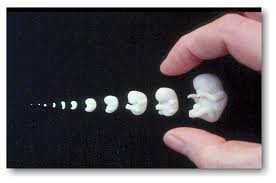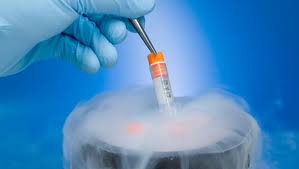
Embryo Adoption-Embryo adoption and donation-Frequently askes questions on Embryo adoption and donation-Embryo Adoption,Transfer,FET,Embryo Donation-Embryo Adoption Clinics,Egg and embryo donation-Fertility Clinic Embryo Donation Programs.
Adoption is an act of love, fulfilled by the courage of couples who want to share their love with children. Embryo adoption is life-giving love in action in an age of technology.Egg and embryo donation are types of fertility treatment used to help infertile couples to conceive.Egg donation is when eggs from a donor are fertilised with your partner’s sperm in a laboratory dish. The resulting embryos are then transferred to the uterus of the needing couple.Embryo adoption is the newest technology of family-building, which combines assisted reproductive technology with adoption, so that instead of adopting a baby, infertile couples adopt an embryo.
 IVF is the step suggested by the infertility specialist when infertile couple get exhausted with all the other ways of trying to get pregnant.In an ivf cycle normally more then one embryos are created.After transferring the fertilised embryo into the womb of the women, remaining embryos of good quality are frozen for the future use.These embryos may be used for failed ivf cycle,future pregnancy or to help infertile couples by donating them.
IVF is the step suggested by the infertility specialist when infertile couple get exhausted with all the other ways of trying to get pregnant.In an ivf cycle normally more then one embryos are created.After transferring the fertilised embryo into the womb of the women, remaining embryos of good quality are frozen for the future use.These embryos may be used for failed ivf cycle,future pregnancy or to help infertile couples by donating them.
Thus Embryo Adoption is simply the adoption of frozen embryos donated by another couple.These embryos are frozen and are a source of hope for others who want to add children to their family. There are now more than 600,000 embryos in frozen storage in the United States: a 54% increase over the previous census in 2002. More couples are choosing to donate embryos. Embryo adoption is a viable and affordable adoption choice.
The process of embryo adoption is suitable for following prospective intended parents.
1. Couples and singles who are per-disposed to adoption as a way of bringing a family’s love to a child in need.
2. Couples who are infertile.
3. Concerned couple is at a high risk of passing on genetic disorders to offspring.
4. Had recurrent IVF failures.
5. If You are looking for an alternative to fertility treatments such as IVF or donor egg recipient IVF.
6..ARE unable to afford IVF or other methods of treatment.
7.Unable to carry to term full pregnancy.
8. Those who do not wish to go through the expensive and emotionally exhausting process of adopting a newborn.
Now couples can fulfill their desire for a family, give birth to the very child they adopted as a tiny, frozen embryo and ensure that a precious life is preserved at the same time.
What is the difference between the embryo adoption and traditional adoption?
Embryo adoption is simply another choice available to families who are interested in adopting a child.Biologically,embryo adoption is exactly the same as a traditional adoption. The child and the parents have no genetic linkage. The most obvious difference between an embryo adoption and a traditional adoption is the pregnancy experience. In traditional adoption child
is adopted after the birth. In embryo adoption adoptive mothers are able to experience the joys of pregnancy,labor and birth.Parents who adopt embryos are able to begin the bonding process with their child before they are born. They are giving frozen embryos an opportunity for life. The embryos belong to the adopting parents before they are placed in the womb of the mother and the donating parents relinquish all parental rights. The child born to the adopting couple is their legal child.
In addition, embryo adoption may be much more affordable than traditional adoption. Embryo adoption also offers couples privacy and secrecy, so that they do not need to worry about societal acceptance of their adopted child.

Is surrogacy different from embryo adoption and donation?
Yes, in surrogacy, an agreement is made for embryos to be transferred into a woman’s uterus, and she carries the pregnancy for the benefit of the infertile couple. The intended parents or the infertile couples are specifically making embryos in vitro for placement into the surrogate using either their own genetics or purchases donor genetics.Compare that to embryo adoption and donation, where the adopting mother herself carries the child or children. The placing couple relinquishes their rights to any children born from the embryos prior to the transfer of those embryos into the adoptive mother’s womb. The
child that the adopting mother carries and gives birth to is the child that she and the adopting father will parent. In simple words in surrogacy, a woman carries a pregnancy for the benefit of the infertile couple. In embryo adoption, the child that the couple carries is the child that they will parent.
How does embryo donation and embryo adoption work?
An anonymous donation occurs when donors and recipients do not know one other’s identities. No contact is made between the donor or the recipient, either in the present or in the future. Anonymous donation most often takes place through a fertility clinic, but may be facilitated by an adoption agency.The recipient couple does not even need to inform their obstetrician
that they achieved their pregnancy through embryo adoption.Most clinics that have an embryo donation program provide very limited information to the recipients about the donors.
Donors are rarely involved in the process of selecting recipients, but are sometimes permitted to set stipulations for eligibility to receive their donation. Medical information about the donated embryos is provided to the recipient.
Occasionally, a “semi-open” arrangement is used in which the parties know family and other information about each other, but their real names and locating information are withheld, in order to provide a layer of privacy protection. In an open adoption both the parties know each other on a first and last names, and be able to have contact with each other, on mutually agreed upon terms.
Embryo adoption costs are primarily paid by the adopting family. Generally the donating family does not receive payment for their donation nor should they expect the recipient family to cover any of the IVF expenses they incurred. Embryo storage costs prior to the match are also the responsibility of the donor family. The recipient family may be asked to pay for storage fees after the match is made.
How many embryos to transfer?
The number of embryos available to transfer will be based on the ARSM guidelines and the donor woman’s age at the time the embryos were created. It cannot ensure that each embryo transfer will become a baby. One easy way of improving the chances of achieving a pregnancy in an IVF cycle is by transferring more embryos. However the risk of having a multiple pregnancy also increases. Adopting families should limit the number of embryos transferred to the number that they are willing to carry to term in the event that all the embryos implant. Some embryo adoption programs specifically require their adopting families to agree to transfer all thawed and viable embryos and to not selectively reduce the number of embryos that have begun
developing. Due to the high-risk nature of a multiple pregnancy, most doctors recommend limiting the number of embryos transferred to no more than three embryos at a time. This is something adopting families should discuss with their doctor prior to their scheduled embryo transfer.
The process of matching donated embryos with adopting family.
Once it is decided to proceed with embryo adoption then the matching of donating and adopting parents begin.The matching process includes the following steps:
1] Both donating and adopting parents provide the adoption agency or attorney with information about themselves and indicate the type of adopting/donating family they desire.
2] Donating parents indicate their preferences regarding the age, income, post-birth work plans, religion, prior marriages, existing children in the family, and race of the adopting families as well as their desire for future contact.
3] Both donating and adopting parents has to go through several medical test,infectious disease screening and genetic test.
Assuming an adopting family matches these criteria, their introductory letter, biography, and photographs are sent to the donating parents for consideration and possible selection. The donating parents’ profile information (introductory letter, biography and photographs), and medical health history are sent to the adopting family for their consideration and possible selection. There are additional ways for donating and adopting parents to be matched. Some fertility clinics will facilitate the matching process, or matches sometimes come about through word of mouth or by searching the Internet. After all screening has been completed the recipient couple may proceed with a cycle. Once this matching is done adopting family doctor will receive the embryology reports, freezing and thawing protocols and all infectious disease screening results.

If the embryos were created with an egg and/ or sperm donor information on the donor(s) will also be sought. The clinic will be decided to perform a frozen embryo transfer (FET) using those embryos. The number of embryos to be thawed and transferred should be mutually agreed upon. Legal contract will also be coordinated.
What if donating parents change their minds after embryo donation?
The legal agreement is signed by both the donating and adopting parties. Hence the risk of the donor parents changing their minds regarding their donation is ruled out. The donating family contractually transfers their ownership and parental rights by signing an agreement prior to the embryos being shipped to the adopting family’s clinic. The contract agreement and relinquishment forms are legally binding between the two families. Once the embryos have been transferred, the donating parents have no legal claim to any resulting children, nor any responsibility for them.
Embryo adoption is an alternative for infertile couples who need egg or sperm donation.The best results with embryo adoptions are with fresh embryo adoptions, which are done with a Donor Egg IVF Program. Embryo adoption offers the unique opportunity to be pregnant, to bond with their child prior to birth, and to give birth. In addition, embryo adoption may be much more affordable than traditional adoption in the countries like the US. Also in India, certain groups such as Christians and Muslims cannot adopt. Embryo adoption can be an extremely attractive option for them. Embryo adoption is an alternative for infertile couples who need egg or sperm donation.

Comments should be on the topic and should not be abusive. The editorial team reserves the right to review and moderate the comments posted on the site.